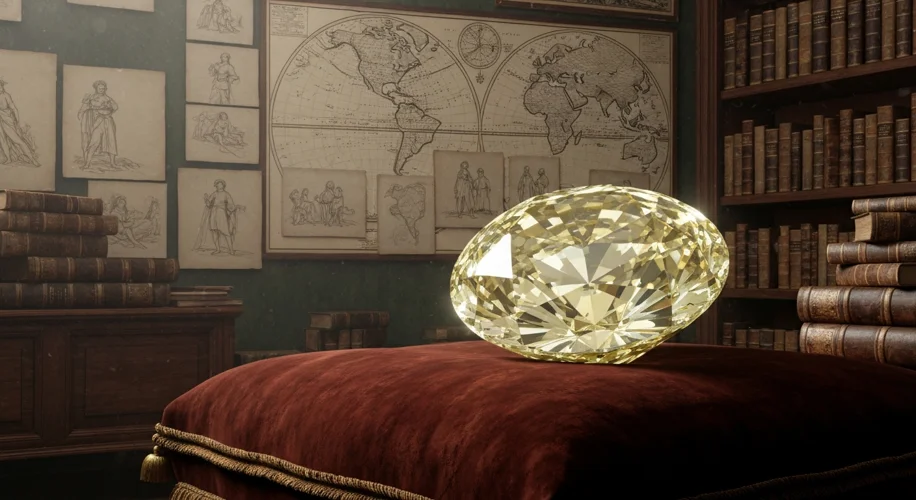Whispers of opulent courts, shadowed corridors, and the gleam of unparalleled brilliance—these are the echoes that surround the Florentine Diamond. More than just a jewel, this magnificent gemstone boasts a history as deep and complex as its own radiant depths, a narrative woven with royalty, revolution, and enduring mystery.
Our story begins not in a Florentine palace, but likely in the ancient mines of India, the birthplace of many of the world’s most legendary diamonds. It’s believed to have originated in the Golconda mines, a region famed for producing stones of exceptional size and clarity. From these distant origins, its journey toward European renown began.
By the 15th century, the diamond had found its way into the hands of the powerful Medici family in Florence. This was an era when Florence was the pulsating heart of the Renaissance, a city ablaze with art, culture, and political intrigue. Lorenzo de’ Medici, the Magnificent, is often credited with possessing this extraordinary stone, though definitive proof remains elusive. What is certain is that the diamond became a symbol of the Medici’s immense wealth and influence, a testament to their patronage of the arts and their strategic grasp on power.

The diamond’s early history is a tapestry of tantalizing glimpses. It’s said to have been traded, gifted, and perhaps even wagered among European royalty. Its distinctive 139.65-carat weight and pale yellow hue, once cut in a unique triple-rose or multifaceted style, set it apart. Its exact journey from India to Florence is a historical puzzle, shrouded in the secrecy and opulence of ancient trade routes.
When the Medici dynasty eventually faded, the Florentine Diamond passed into the hands of the Habsburg rulers of Austria. For centuries, it resided in the Imperial Treasury in Vienna, a glittering centerpiece of the Habsburg collection. It witnessed the rise and fall of empires, the tumultuous shifts of European power, and the grand ceremonies of imperial courts. The diamond remained a symbol of dynastic power, a silent observer of history’s grand unfolding.
However, the 20th century brought seismic changes. The collapse of the Austro-Hungarian Empire in the aftermath of World War I marked a turning point. The Habsburgs were deposed, and their vast treasures, including the Florentine Diamond, were scattered. The diamond’s fate became uncertain, a subject of speculation and rumor. It vanished from public view, leaving historians and gemologists alike in suspense.
One theory suggests it was smuggled out of Austria by the imperial family. Another posits it was sold to a private collector. The lack of definitive records during this period of upheaval only added to the mystique. For decades, the Florentine Diamond was like a ghost in the annals of gemology—known, celebrated, but ultimately, lost.
Then, like a whisper from the past, the diamond began to resurface. In the late 20th century, it reappeared, often in private collections, its ownership and whereabouts subject to persistent, yet often unconfirmed, reports. Its appearances were fleeting, often linked to auctions or private sales, fueling further intrigue. Some accounts place it in Switzerland, others in the United States, each sighting adding another layer to its enigmatic journey.
The most recent confirmed sighting and ownership trace it to a private individual, though its current location remains a closely guarded secret. The Florentine Diamond, once a symbol of Florentine and Austrian imperial power, has now become a legend—a testament to the enduring allure of a perfectly cut, historically significant gemstone. Its story is a reminder that history is not just written in books, but can also be held, admired, and sometimes, lost, in the dazzling brilliance of a single, extraordinary jewel.

